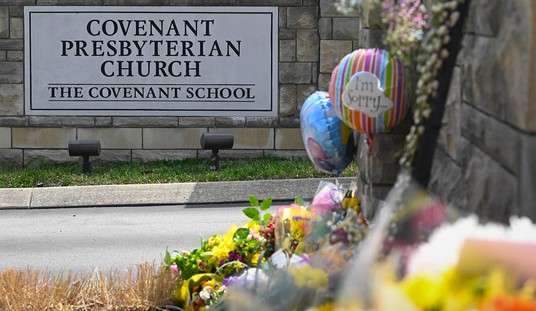Sponsored by NRA-ILA
In mid-September, Tennessee gun control group Safe Tennessee Project trumpeted a disturbing new statistic gleaned from the Centers for Disease Control’s Web-based Injury Statistics Query and Reporting System (WISQARS) in order to bolster their anti-gun agenda. The group contended that in 2014, 105 Tennesseans were killed in unintentional shootings, a more than five-fold increase from 2013. As expected, the press dutifully parroted the group’s claims. However, the incredible statistic touted by Safe Tennessee Project turned out to be just that, not credible. Following a review of their data, the Tennessee Department of Health, who provided the unintentional shooting data to the CDC, determined that the 105 figure was inaccurate and that the correct number of unintentional shooting deaths in Tennessee in 2014 was five.
On September 13, Safe Tennessee Project published an item on their website titled, “Tennessee Now Leads Nation in Fatal Unintentional Shootings.” The article reported that CDC data showed that there were 105 unintentional firearm fatalities in Tennessee in 2015, and noted that this was a marked increase from the previous five years, in which the total number of unintentional firearms deaths ranged from 19-32. As the article’s headline suggests, Safe Tennessee Project claimed that this drastic increase made Tennessee the national leader in unintentional firearm fatalities.
Safe Tennessee Project was quick to blame the Volunteer State’s gun laws for the alleged increase in unintentional firearm fatalities. The item quoted Safe Tennessee Project Research Director Jonathan M. Metzl, who stated, “The dramatic jump in unintentional shootings deaths in our state is a cause for alarm and a call to action… Legislation could make such effective strategies as gun-safety locks, smart guns, or gun safes as common as seat belts are in cars. This data truly should be a wake-up call for lawmakers on both sides of the aisle.”
Uncritical news outlets were quick to repeat Safe Tennessee Project’s claims about unintentional firearm fatalities. The Associated Press distinguished itself with a particularly careless piece that was little more than a rewrite of Safe Tennessee Project’s article.
In their article reporting the increase, Safe Tennessee Project, seemed to acknowledge their own skepticism concerning the accuracy of the initial 2014 unintentional firearm fatalities number. Safe Tennessee Project Policy Director Beth Joslin Roth noted, “We’ve actually been aware of the new numbers for several months, but the increase was so dramatic that we wanted to confirm the numbers before reporting them.” The group claims that it contacted the CDC and the Tennessee Department of Public Health to confirm the suspect 2014 unintentional firearm fatality figure before using it.
Whatever steps Safe Tennessee Project may or may not have taken to confirm the ridiculous Tennessee unintentional firearms fatality number, their efforts proved woefully inadequate. On September 22, The Tennessee Department of Public Health issued a press release which announced that “Incorrect data provided earlier indicated the number of accidental gunshot deaths had dramatically escalated from 19 in 2013 to 105 in 2014.” Further, the release noted, “After manually reviewing death certificates, TDH reports five people died from accidental gunshot wounds in the state in 2014.” The release also contained a listing of Tennessee unintentional firearm fatality totals for each year since 1999; 2014’s total was the lowest listed.
The Tennessee Department of Public Health’s determination of five unintended firearm fatalities in the state in 2014 significantly undermines the anti-gun narrative that Safe Tennessee Project sought to create using the erroneous statistic. For instance, to illustrate Tennessee’s supposed problem with fatal unintentional shooting deaths, Safe Tennessee Project constructed a graph showing the state’s rate of unintentional firearms fatalities per 100,000 in 2014 versus those of the next four highest states. Using the corrected data, Tennessee’s rate of unintentional firearm fatalities is far below these other states, which include Massachusetts, a state with the type of severe firearms storage requirements that Safe Tennessee Project seeks to impose.
Moreover, the Safe Tennessee Project article quotes Metzl as stating, “Nationally, unintended shooting rates tend to rise most dramatically in states that allow the easiest access to firearms, and in instances where safe-storage practices are not observed.” Back in reality, the unintentional firearm fatality rate does not tend to rise at all, but rather to decrease. Since 1903, there has been a 94 percent decrease in the rate of fatal firearm accidents. From 1994 to 2014 the rate of unintentional firearm fatalities dropped by more than half. During this time period NRA has worked to educate millions of Americans in the safe use of firearms.
Following the Tennessee Department of Public Health’s correction of the unintentional firearm fatality data, Safe Tennessee Project acknowledged the inaccuracy of their article. However, the group’s eagerness to use plainly suspect data to push their political agenda should inform the public and legislators as to the legitimacy of their work. Further, this episode should stand as yet one more reminder of much of the media’s willingness to indiscriminately report on the contentions of any group that shares their anti-gun prejudice.
Sponsored by NRA-ILA








Join the conversation as a VIP Member